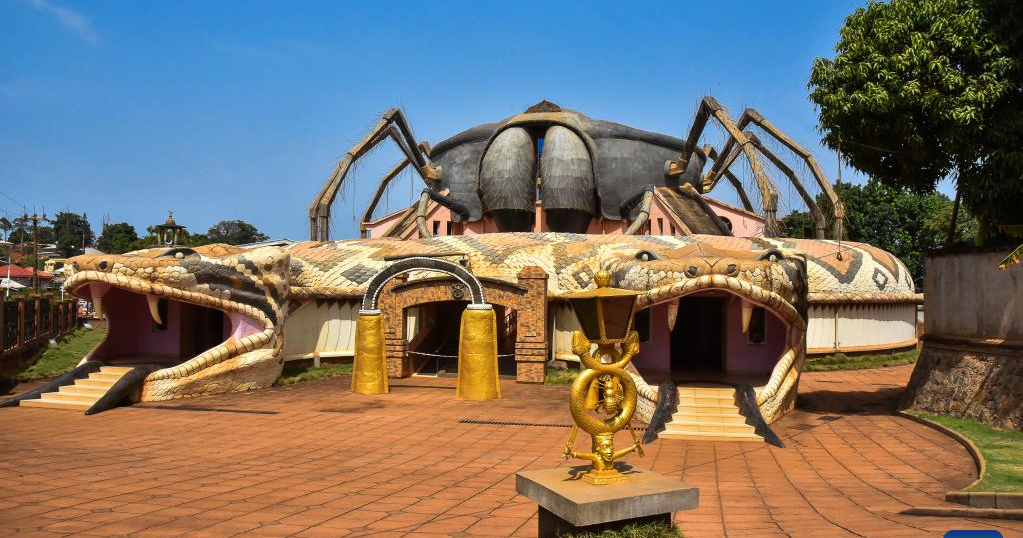Longevity, influence and the social media trap: Who do we trust with our health?
In a world where six-pack abs are flaunted more than six-point health plans, who are we really trusting […]

It’s the first thing that welcomes tourists who visit the new museum to enjoy a taste of history, the opened mouth of a two-headed snake with its fangs sticking out.
The Bamoun Kings Museum is located in Foumban, Northeast of the capital, Bafoussam.
The museum was constructed to honour Bamoun, an ethnic group from Northeastern Cameroon and one of the oldest kingdoms in sub-Saharan Africa founded in 1384.
The edifice was constructed by Issofou Mbouombouo, a native of Cameroon whose design involved a combination of tradition and modernity.
The structure has the coat of arms of the kingdom and a double bell that signifies patriotism.
While the entrance of the museum gives you the feel of a snake, the topmost part of the building looks like a spider with its legs sticking out in the middle part of the building. Both symbols signify the victory of the Bamoum people and the spider is used in divination rituals by Bamoum doctors.
The two-headed snake was created by the 11th king of the kingdom, according to Xinhua news.
The story is told that the king was attacked by two enemy forces from the east and the west, his war strategy was to split his army in two and fight back, and he won on both fronts at the same time. On his return, he said 'We have won these two wars like a two-headed snake, which can bite towards two directions at the same time.'
The people believe in a supreme god and ancestor worship is their religion.
Bamoun King, Ibrahim Njoya, a famous king in the kingdom who reigned from 1889 to 1933 was the motivation for the construction of the museum.
Grandson of King Ibrahim Njoya, former Sultan King Ibrahim Mbombo Njoya in 2013, launched the construction of the museum.
The new museum was inaugurated on April 13, 2024, in an iconic ceremony with over 2,000 guests.
Current Sultan King Mouhammad Nabil Mforifoum Mbombo Njoya oversaw the inauguration of the museum which is now open to tourists.
According to VOA, the museum has 12,500 pieces including weapons, pipes, and musical instruments. The museum also has on display items from the life of the most famous Bamoun King, Ibrahim Njoya, who reigned from 1889 to 1933 and created Bamoun Script, a writing system that contains over 500 syllabic signs. It also exhibits his manuscripts and a corn-grinding machine he invented.

In a world where six-pack abs are flaunted more than six-point health plans, who are we really trusting […]

In the era of social media, post-COVID, and with mental health at the forefront, a shift is taking […]